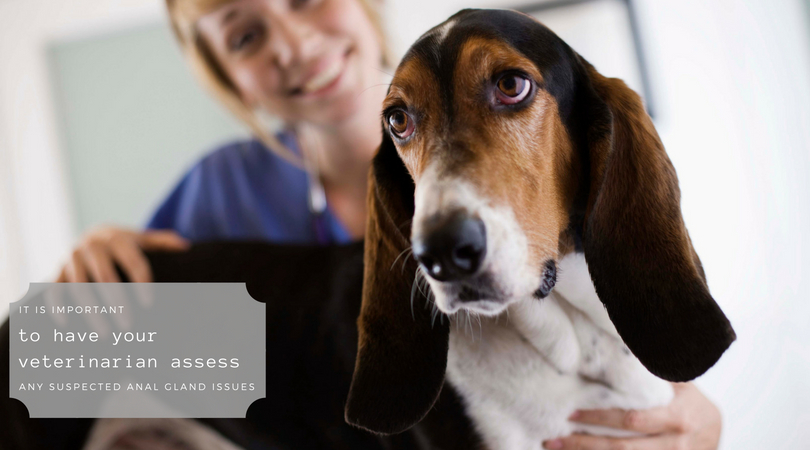What’s that SMELL? Many pet owners are stumped the first time they notice the pungent, fishy odor coming from their pet. While dogs have the most problems with their anal glands, even cats can have issues.
What are anal glands?
The anal glands, or anal sacs, are two small glands ranging from about the size of a pea to the size of a grape. Their openings are located just inside the anus and are positioned at about 4:00 and 8:00. They create a smelly secretion that can range from being a thin liquid to a thick paste. They are primarily believed to be a scent marking gland that marks the stools as they defecate. The glands will also express if the pet is nervous or startled. The scent is hard to miss!
What are symptoms of anal gland problems?
- Scooting - Uncomfortable or full anal glands are a common cause of scooting. Skin irritations, allergies, and skin infections may also cause your pet to scoot, so it is important to have your veterinarian assess the scooting if it is a repeated problem. Some dogs with very normal size glands will still scoot and benefit from having them emptied.
- Licking the area
- Swelling or redness of the skin over the glands
- Blood in the stool, in the hair, or on the carpet
What are common anal gland issues and what can be done?
- Anal Gland Impaction - If the gland is not emptying normally, the secretions may become thicker and the gland will distend. This can make the dog uncomfortable, and they will usually begin to scoot and lick. A veterinarian can empty these glands by gently expressing them with a gloved finger. Some dogs need to have their anal glands emptied every month, and other dogs never need to have it done. Small breed dogs seem to have more issues than larger breeds.
- Anal Gland Sacculitis - If the gland remains impacted, it may become inflamed, more painful, and invaded by bacteria, starting a true infection. Treatment includes expressing the gland, and the gland may need to be infused with medication. Oral antibiotics are sometimes needed.

- Anal Gland Abscess - This is the most painful condition and occurs when the gland becomes infected and swollen, and it often ruptures through the skin. The gland will need to be emptied and medicated. Oral antibiotics and pain medication are used as well. Sedation may be needed to treat these glands because they are so painful.
- Anal Gland Tumors -These are much less common than the problems listed above, but are very serious. Most anal gland tumors are malignant adenocarcinomas. Dogs with these tumors may have trouble defecating, have a visible swelling, or lick the area. However, some tumors are found on a routine exam when the dog is having no symptoms. Treatments include surgery and chemotherapy.
If you have more questions about your pet’s anal glands, please be sure to contact your family vet. We are all here to help!
The blog originally appeared on North Elm Animal Hospital and has been adapted with permission for reposting.
